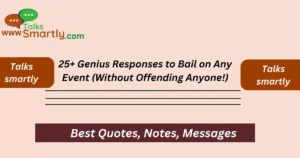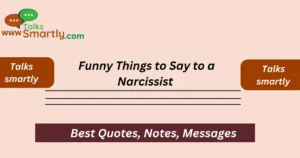“Discover effective and meaningful ways to respond when someone says “Amen.”
Responding to “Amen” can be a powerful way to acknowledge or support someone’s prayer, statement, or sentiment. Whether in religious settings, casual conversations, or online interactions, having a variety of responses can enhance communication and express your support more effectively.
Next time you hear “Amen,” use these responses to engage meaningfully and show your understanding or agreement. These suggestions will help you navigate different contexts with ease.
In this blog post, you’ll find 35 creative and thoughtful ways to respond to “Amen,” ranging from formal to informal. Each suggestion is designed to help you connect better and express your sentiments clearly.
35 Best Ways to Respond to “Amen”
- “Absolutely!”
- “So be it!”
- “I concur!”
- “Indeed!”
- “That’s right!”
- “I agree completely!”
- “Well said!”
- “Totally!”
- “Yes, truly!”
- “Very true!”
- “You’ve got it!”
- “I second that!”
- “Without a doubt!”
- “Indeed so!”
- “Absolutely, Amen!”
- “Perfectly said!”
- “That’s right on!”
- “I’m with you!”
- “Well put!”
- “Couldn’t agree more!”
- “So true!”
- “Yes, and Amen!”
- “I’m on board!”
- “Amen to that!”
- “Exactly!”
- “Spot on!”
- “You’re right!”
- “I support that!”
- “Here, here!”
- “Preach it!”
- “Well stated!”
- “Couldn’t have said it better!”
- “I’m in agreement!”
- “Absolutely, that’s true!”
- “Indeed, Amen!”
1. “Absolutely!”
A strong affirmation of what has been said.
Example: “When someone says ‘Amen’ to a powerful prayer, you can respond with ‘Absolutely!’ to show your agreement.”
2. “So be it!”
A traditional response that signifies acceptance and agreement.
Example: “After a heartfelt wish, saying ‘So be it!’ reflects your hope for the fulfillment of the prayer.”
3. “I concur!”
A formal way to express agreement.
Example: “In a meeting, after someone concludes with ‘Amen,’ responding with ‘I concur!’ shows that you agree with their statement.”
4. “Indeed!”
A concise way to affirm the truth of what was said.
Example: “If someone expresses a profound thought and concludes with ‘Amen,’ replying with ‘Indeed!’ confirms your agreement.”
5. “That’s right!”
A casual way to show you agree.
Example: “After someone’s uplifting statement, you can say ‘That’s right!’ to express your shared sentiment.”
6. “I agree completely!”

A full endorsement of the statement made.
Example: “When someone voices a collective wish and ends with ‘Amen,’ replying with ‘I agree completely!’ reinforces your support.”
7. “Well said!”
A compliment that acknowledges the strength of the statement.
Example: “After a powerful prayer, ‘Well said!’ highlights your appreciation and agreement with the sentiment expressed.”
8. “Totally!”
A casual and enthusiastic way to express agreement.
Example: “In response to a heartfelt comment, ‘Totally!’ shows your enthusiastic support.”
9. “Yes, truly!”
An emphatic agreement that underlines the truth of the statement.
Example: “Replying with ‘Yes, truly!’ after someone’s meaningful statement reinforces your shared belief.”
10. “Very true!”
A response that confirms the accuracy of the statement.
Example: “When someone concludes with ‘Amen’ after a truth-filled statement, ‘Very true!’ acknowledges your agreement.”
11. “You’ve got it!”
An informal way to show you are on the same page.
Example: “Responding with ‘You’ve got it!’ after someone’s ‘Amen’ highlights that you share their views.”
12. “I second that!”
A way to formally support or endorse what has been said.
Example: “In a discussion or meeting, responding with ‘I second that!’ shows that you fully support the statement made.”
13. “Without a doubt!”
An emphatic confirmation of agreement.
Example: “Replying with ‘Without a doubt!’ after someone’s ‘Amen’ underscores your firm agreement with their words.”
14. “Indeed so!”
A formal response that agrees with what has been expressed.
Example: “After a compelling statement, saying ‘Indeed so!’ reinforces your agreement with the conclusion.”
15. “Absolutely, Amen!”
Combining agreement with the traditional term.
Example: “Responding with ‘Absolutely, Amen!’ after a prayer expresses both your agreement and the traditional acknowledgment.”
16. “Perfectly said!”
Acknowledges that the statement was well-articulated.
Example: “After a well-spoken comment, ‘Perfectly said!’ shows you appreciate the eloquence and agree.”
17. “That’s right on!”
A casual way to confirm that the statement is accurate.
Example: “Replying with ‘That’s right on!’ after someone’s comment shows your agreement with their point.”
18. “I’m with you!”
A supportive way to express agreement.
Example: “Responding with ‘I’m with you!’ indicates that you are aligned with the sentiments expressed.”
19. “Well put!”
A compliment for a well-articulated point.
Example: “After a powerful statement, ‘Well put!’ shows that you value the way it was expressed and agree.”
20. “Couldn’t agree more!”
A strong endorsement of the statement.
Example: “Replying with ‘Couldn’t agree more!’ confirms that you fully support and agree with what was said.”
Best Replies for “Does That Make Sense?”
21. “So true!”
An affirmation of the truth of the statement.
Example: “Saying ‘So true!’ after someone’s comment shows that you agree with the truthfulness of their words.”
22. “Yes, and Amen!”
Combines affirmation with the traditional ending.
Example: “Replying with ‘Yes, and Amen!’ reflects both your agreement and traditional acknowledgment.”
23. “I’m on board!”
An informal way to show your agreement.
Example: “After someone concludes with ‘Amen,’ saying ‘I’m on board!’ indicates that you support their statement.”
24. “Amen to that!”
Affirms and supports the statement made.
Example: “Replying with ‘Amen to that!’ echoes your agreement with the point or prayer expressed.”
25. “Exactly!”
A straightforward way to confirm agreement.
Example: “Saying ‘Exactly!’ after a statement and ‘Amen’ shows that you perfectly agree with what was said.”
26. “Spot on!”
An informal way to acknowledge the accuracy of the statement.
Example: “Responding with ‘Spot on!’ indicates that you agree with the precision of the comment.”
27. “You’re right!”
A confirmation of agreement with what was said.
Example: “Saying ‘You’re right!’ shows that you agree with the truth or accuracy of the statement.”
28. “I support that!”
A way to show endorsement and agreement.
Example: “Replying with ‘I support that!’ reflects your agreement and backing of the statement or prayer.”
29. “Here, here!”
A traditional way to express agreement.
Example: “Using ‘Here, here!’ after a powerful comment shows that you strongly support what was said.”
30. “Preach it!”

A casual and enthusiastic response that supports the statement.
Example: “Saying ‘Preach it!’ shows that you’re excited and in full agreement with the statement.”
31. “Well stated!”
Acknowledges that the statement was clearly articulated.
Example: “After someone’s effective comment, ‘Well stated!’ shows that you agree with their articulation.”
32. “Couldn’t have said it better!”
A compliment that acknowledges the strength of the statement.
Example: “Replying with ‘Couldn’t have said it better!’ shows that you agree and appreciate the way it was expressed.”
33. “I’m in agreement!”
A formal way to express that you share the same view.
Example: “Saying ‘I’m in agreement!’ after someone’s ‘Amen’ shows that you are aligned with their sentiment.”
34. “Absolutely, that’s true!”
Combines a strong affirmation with acknowledgment of truth.
Example: “Replying with ‘Absolutely, that’s true!’ confirms both your agreement and recognition of the statement’s accuracy.”
35. “Indeed, Amen!”
Combines formal agreement with traditional acknowledgment.
Example: “Using ‘Indeed, Amen!’ after a statement shows your agreement and respect for the traditional conclusion.”
ANSWER TO KEY QUESTION
1.What does saying “Amen” signify?
“Amen” is often used to affirm or agree with a statement, prayer, or sentiment. It signifies agreement and acknowledgment.
2.How can I respond to “Amen” in a religious setting?
Responses like “Absolutely!” or “So be it!” are respectful and affirming in religious contexts.
3.Are there casual ways to respond to “Amen”?
Yes, responses like “Totally!” or “Spot on!” work well in informal settings.
4.Can I use these responses in online conversations?
Absolutely! These responses can be adapted to online interactions to express agreement or support.
5.How do I choose the best response?
Consider the context and your relationship with the person. Formal responses work for serious discussions, while casual ones fit informal settings.
Conclusion
Responding to “Amen” with the right phrase can enhance your communication and show your support or agreement. Whether you’re in a formal religious setting or a casual conversation, having a range of responses at your disposal ensures you can engage meaningfully.
By using these suggestions, you can match the tone and context of the conversation, fostering better connections and expressing your sentiments effectively. Remember, the key is to choose a response that aligns with the context and your personal style, making your interaction more genuine and impactful.











